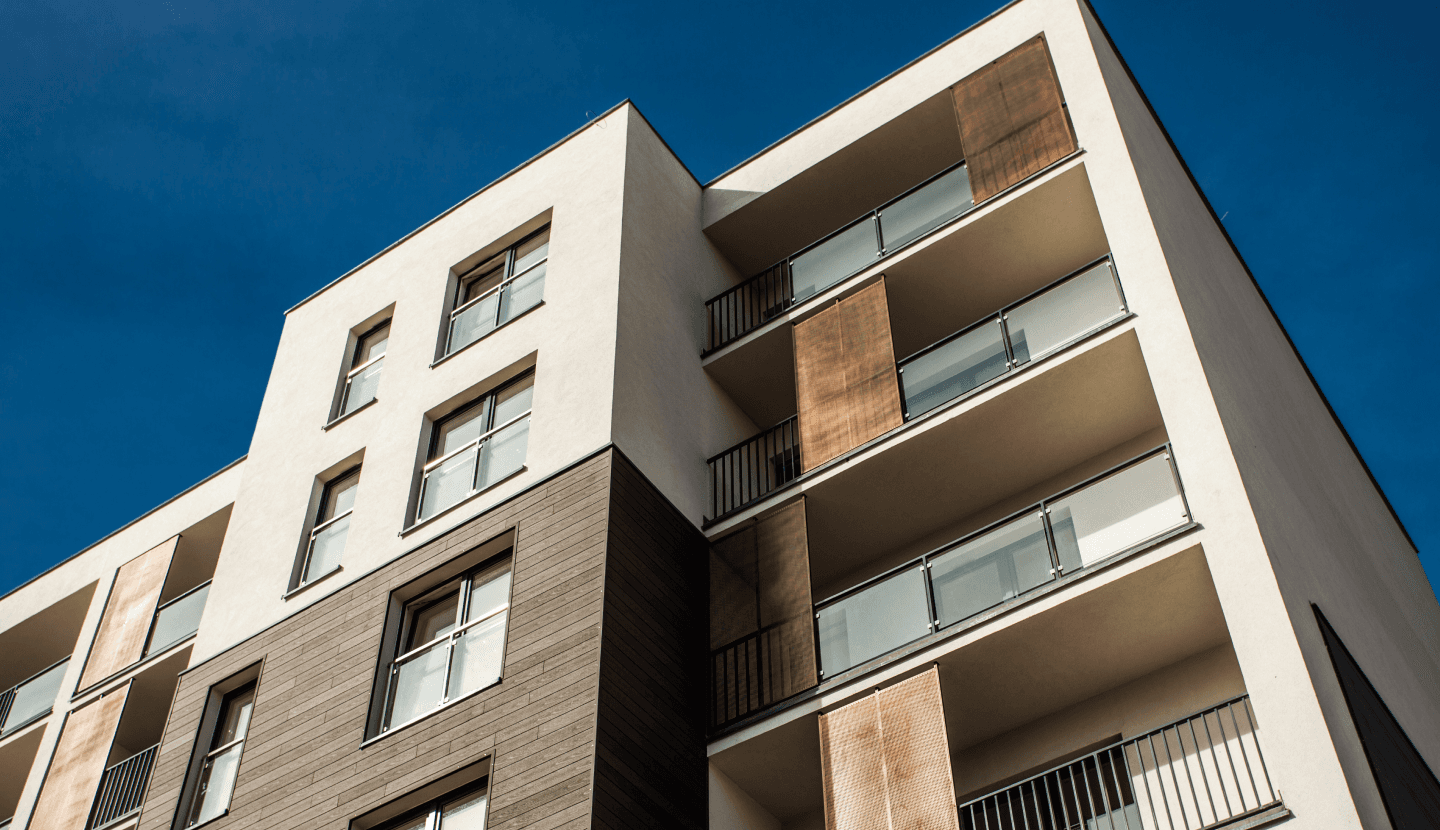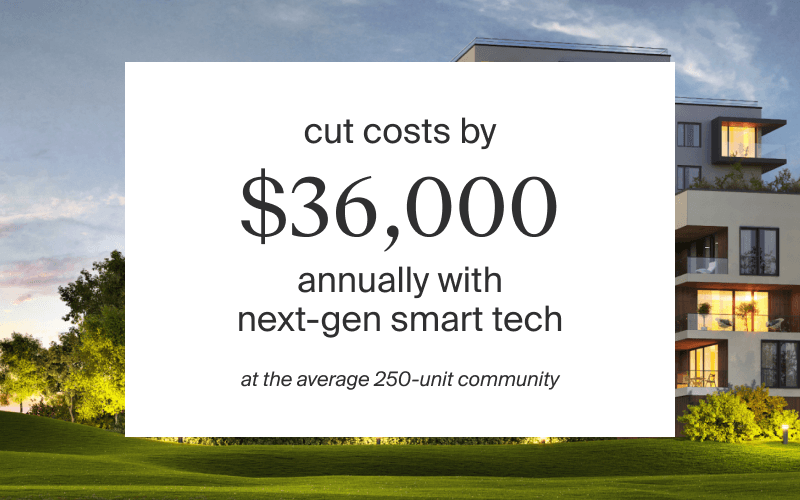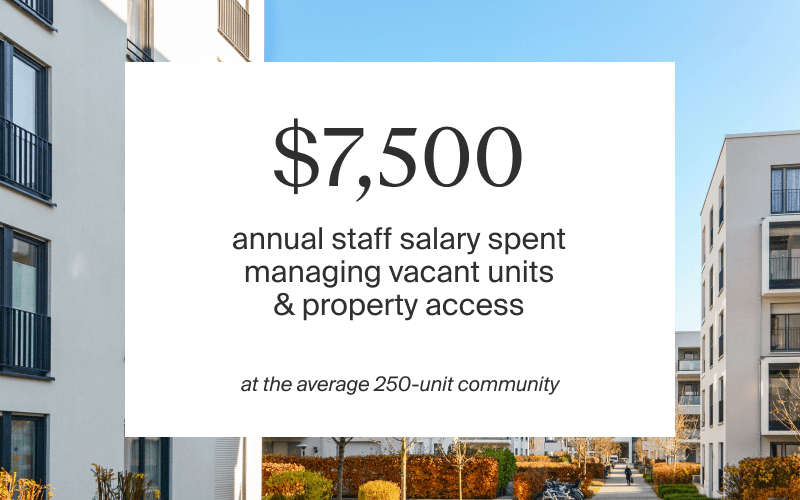January 03, 2025
Standing Out in 2025: How Retrofits Can Compete Against New Supply

Key takeaways
- Growing supply and softening rents require asset managers to strategically choose cost-effective upgrades for retrofits.
- Next-gen smart tech is the most cost-effective differentiator for existing buildings because it helps attract and retain residents while cutting operational expenses.
Why differentiation is key in 2025
Owners and asset managers in 2025 are up against a market where supply outpaces demand.
In markets with ballooning supply, it’s harder than ever for existing properties to stand out — not just against other existing buildings, but against the increasing number of new builds entering the market.
Further, times of growing supply mean declining rents. Softening rents are eating into revenue, making it difficult to maintain a strong bottom line.
Upgrading existing assets requires a fresh approach
Maximizing returns with core plus and value-add investments requires strategically implementing the right upgrades.
Historically, asset managers have gravitated toward upgrades that modernize the look and feel of the building. Adding amenities like fitness centers and swimming pools has been par for the course.
But today, successful owners are shifting their focus to a new differentiator: smart tech. As an attractive amenity with cost-cutting capabilities, today’s next-gen smart tech platforms stand out as an effective shield against 2025 market conditions. Beautifying the property’s landscaping might not hurt, but it won’t substantially move the needle in terms of converting prospects and retaining existing residents—nor will it help reduce your operating expenses.
Why next-gen smart tech is more cost-effective than other upgrades
You have a lot of choices when upgrading an existing asset. But few upgrades are as cost-effective as a next-gen smart technology platform.
Most notably, next-gen smart tech has the power to reduce operational costs better than other upgrades. At a time when raising the rent isn’t an option, the next best thing is to cut operating expenses. Gyms and cosmetic unit upgrades won’t achieve that, but smart tech can save $36,000 annually at the average 250-unit community.

Smart tech is uniquely able to reduce current expenses and protect your property from new and unexpected costs. For example: Using technology to keep building-wide temperatures at safe limits won’t just prevent a $157,000 insurance claim for damage caused by a burst pipe—it’ll also limit the number of insurance claims you file overall, which could protect your premiums or prevent your building from falling into the secondary (and generally more expensive) E&S insurance market.
Additionally, implementing the right smart tech doesn’t require capital-intensive upgrades — in fact, a next-gen tech platform has a payback period of less than two years. Over-investing in surface-level amenities like upgraded kitchen appliances or aesthetic exterior renovations ends up costing you a lot with little return. This is particularly true when you’re competing against an increasing number of new builds, which already have ultra-modern countertops and fresh exterior landscaping.
How next-gen smart tech helps combat 2025 market conditions
We’ve established that smart tech is more cost-effective than other upgrades, but how exactly does it benefit a building in markets where supply is high and rents are low?
Here’s how next-gen smart tech helps combat tough market conditions:
- Lowers operating costs
- Attracts and engages prospects
- Retains existing residents
- Reduces staff hours spent on admin tasks
Lowers operating costs
Lowering operating expenses is always top of mind, but especially so at times when rents are softening. Unlike cosmetic upgrades, the right smart tech has the unique ability to reduce operating costs.
Next-gen smart tech cuts costs by:
- Preventing property damage: Leak sensors notify staff before major water damage occurs. Smart thermostats with safety temperature settings prevent temperature-related damage like mold and burst pipes.
- Reducing insurance claims and protecting premiums: By preventing property damage, you’re not just saving on repairs — you’re also filing fewer insurance claims and protecting your premiums from increasing.
- Eliminating rekeying costs: Digital access control solutions eliminate the hassle of manually rekeying locks, saving $50 on average per move-out.
- Protecting against squatters: Digital access also empowers staff to automatically and remotely lock vacant units to prevent squatters — which will cost you an average $6,500 on eviction costs alone.
- Reducing vacant unit utility costs: Smart thermostats with vacant unit automation maximize energy-efficiency, reducing utility bills by $38/month per vacant unit on average.
- Reducing staff overhead: Without smart tech, an estimated $7,500 of staff salary every year is spent on managing vacant units and property access. By automating and streamlining manual processes, staff can focus their attention on revenue-driving tasks.

Attracts & engages prospects
Considering that 82% of renters seek smart tech, adding it to your building is a great way to capture demand. And when competing against new construction that already has smart tech built-in and is offering months of rent concessions, it’s a must.
But not just any smart tech will do. Devices that don’t add convenience or comfort to residents’ daily lives will go overlooked, as will devices that are overly complicated or lack reliable connectivity.
You need a platform that is:
- Compelling with an elegant resident app so that it stands out during leasing tours and in marketing materials.
- Reliable so it functions flawlessly when staff demonstrate it during tours.
- Designed to deliver the experiences prospects actually care about, like accessing the entire community from a single app instead of carrying fobs or downloading multiple apps.
Retains existing residents
Residents today have endless rental options, many of which are offering enticing concessions. As such, thoughtfully implementing intuitive smart tech that prioritizes residents’ convenience and comfort — like property-wide access control and smart thermostats they can adjust remotely — is the best way to affirm you’ve accounted for their wants and needs.
But don’t overlook how the technology gets installed. Even the most engaging smart tech won’t win residents over if the installation process is disruptive and unwieldy. Prove that your property respects its residents by choosing an experienced and accountable partner who will ensure a non-disruptive experience before, during, and after installation.
Achieve all this and you’ll have successfully cemented your property as the best place for current residents to continue calling home.

Reduce staff hours spent on admin tasks
Hand-in-hand with cutting costs is smart tech’s ability to automate manual processes so staff can redirect their attention to more impactful revenue-driving tasks — like marketing the property to make sure it stands out to prospects.
Choose a next-gen platform that offers:
- Reliable connectivity so that devices and automations function as expected without wasting time troubleshooting issues.
- Deep integrations with other proptech solutions so staff don’t have to work across multiple systems.
- Effective and dependable automations that keep the property running on autopilot.
- Community-wide access control to save staff time managing access for visitors and vendors.
Next steps for owners evaluating an upgrade
Retrofitting a building with smart tech achieves more than just giving residents a collection of shiny devices in their unit. When done right, smart tech creates seamless experiences for both residents and staff, which boosts resident acquisition and retention rates while improving operational efficiency and trimming expenses.
When shopping for a smart technology platform, choose one with high device connectivity uptime and superior hardware, from a provider committed to high-quality installation and ongoing support.
Insights from the field
Explore work and research reflecting over a decade worth of experience and leadership in the multifamily space.


























